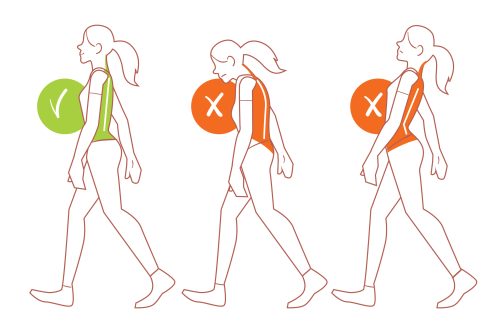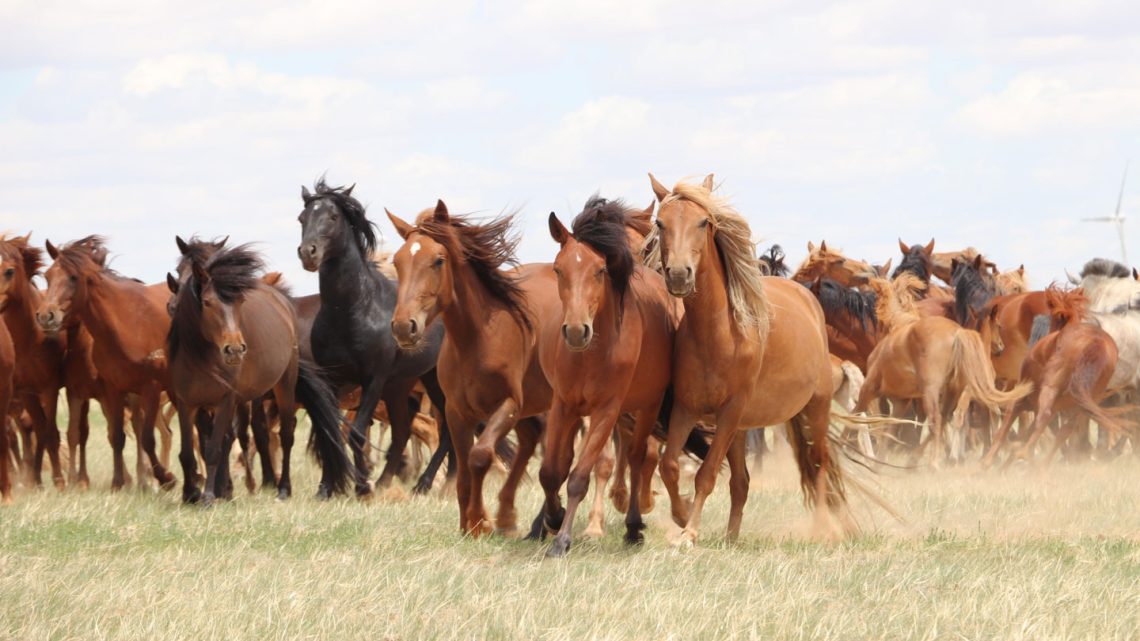
Birthplace of modern domestic horses
The origin of modern domestic horses is a controversial and complex issue dominated by 2 sciences: genetics and archeology. Scientists for a long time could not determine the exact region of the appearance of horses. A variety of regions were considered their homeland: from the territory of modern Portugal to Mongolia.
Recently, a large international team of researchers published an article in the journal Nature analyzing more than two hundred genomes of ancient horses and finally tried to answer the question: “Where did the ancestors of modern domestic horses first appear?”.
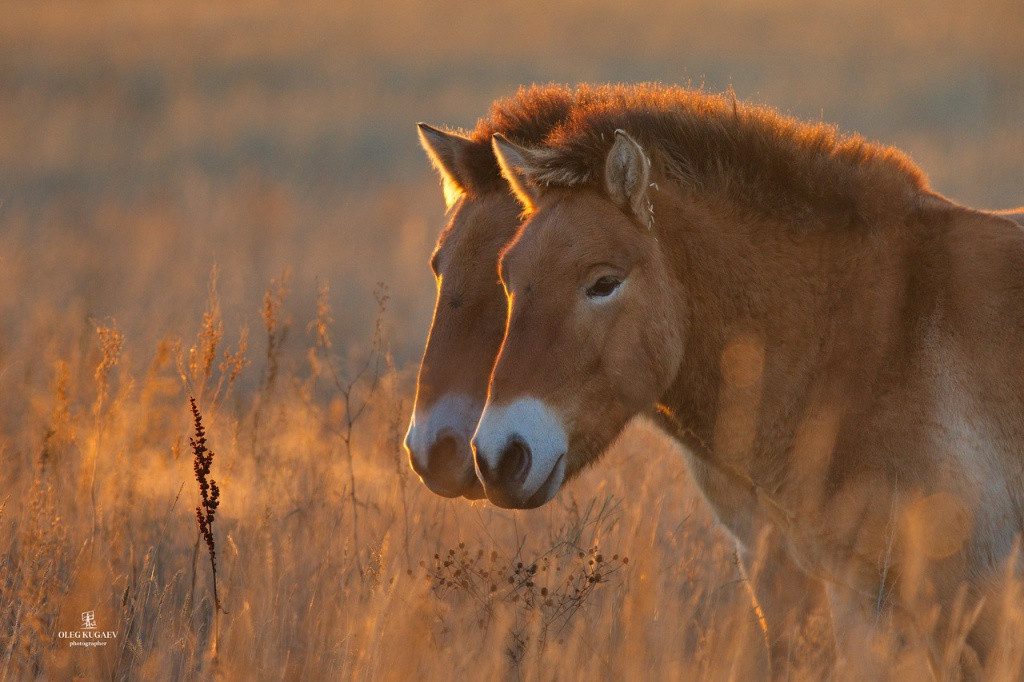
Przewalski’s horses / Photo: Oleg Kugaev
The authors of the article claim that real homeland of all modern domestic horses are lower reaches of the Don and Volga – the area around the modern Astrakhan region and western Kazakhstan.
Bioinformatician, researcher at MicroGen Biotech Dmitry Ravcheev explained exactly how scientists came to such conclusions, and also found out who the extinct European tarpans and miraculously preserved Przewalski’s horses are for modern horses.
Horses have lived with us for only 5 thousand years, while dogs and cows were domesticated much earlier – 15 and 10 thousand years ago. However, in such a relatively short period of time, horses managed to radically change our lives, increasing the mobility of human communities and changing the balance of military forces.
British mathematician, biologist and popularizer of science Jacob Bronowski in his book and TV series Rise of Mankind compares the domestication of the horse to the invention of the tank – in the sense that, unlike the cattle necessary in agriculture, the horse had for a person primarily a military value. But despite this, the question of the origin of domestic horses still has a lot of gaps.
At the moment, Central Asia (and specifically the settlement of Botai in the North of Kazakhstan, the birthplace of the Botai culture), various settlements on the Iberian Peninsula and in Anatolia simultaneously claim the place of the birthplace of the first domestic horses.
How the domestication of horses took place: one-time or repeatedly – is unknown. Otherwise, scientists find it difficult to say from whom modern horses originated. Was it one domesticated population or was it a mixture of descendants of different horses, domesticated at different times and in different places.
Another stumbling block is the closest ancestor. Now it is difficult to say whether he was very similar to a modern horse tarpanwho lived in the forests and steppes of Europe until the beginning of the XNUMXth century or survived to this day Przewalski’s horse, or maybe a completely different kind of wild horse, for example, Lena horsewho lived in the northeast of Siberia.
A group of scientists analyzed the genomes of a record number of ancient horses at the moment – 264 animals that lived from 50 to 200 BC. e. on the Iberian Peninsula, in Asia Minor and Central Asia, as well as in the steppes of Western Eurasia. The work also included studies of the genomes of ten modern and nine ancient horses.
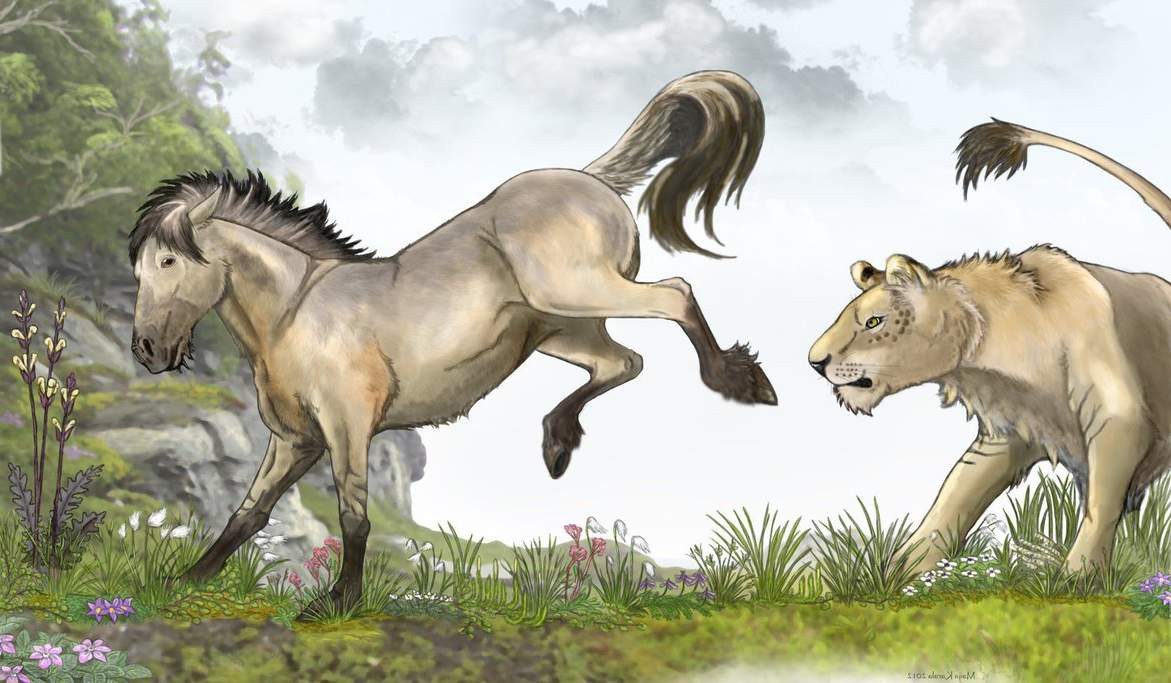
Tarpan / Illustration: animalreader.ru
What did you manage to find out?
- First, it turned out that all modern domestic horses are descended from the same group of domesticated horses, i.e. are closely related to each other.
- Secondly, ancient domestic horses that became extinct about 4200 years ago, as well as wild horses from Western Eurasia that lived until the beginning of the third millennium BC, turned out to be closely related to modern domestic horses.
- Thirdly, the position of the horses from the settlement of Botai*, which were still considered the most ancient representatives of domestic horses in the world, became clearer.
* The Botai settlement is an archaeological monument in the south of the North Kazakhstan region of Kazakhstan, dating back to 3700-3100 BC. e.
The most ancient of the domesticated horses were indeed found there, but for modern horses they turned out to be only distant relatives. At the same time, the Botai horses turned out to be close relatives of the Przewalski’s horse. So that Przewalski’s horse, although it is the ancestor of the domesticated horse, is not modern, but ancient, whose descendants have not survived to this day.
The Lena horse, found in the permafrost of Yakutia, turned out to be the most distant relative of modern domestic horses of all known.
Scientists also reconstructed the history of the settlement of the domestic horse, based on studies of the genomes and the degree of relationship of ancient horses that lived at different times in different parts of Eurasia. So, the horse was domesticated in Western Eurasia, presumably in the lower reaches of the Volga and Don rivers, in the period 3500-2600 BC. e. The people who did this were most likely representatives of the Yamnaya culture, which existed at the end of the Copper Age and the beginning of the Bronze Age in the south of the East European Plain.
In 2200-2000 BC. e. horses, thanks to man, spread to the west: Bohemia (the west of modern Czech Republic), Asia Minor and the lower reaches of the Danube. 1500-1000 BC domestic horses appeared in Western Europe and Mongolia.
Interesting fact: in the extinct ancient wild horses of Asia Minor and the Iberian Peninsula, genetic variants characteristic of modern domestic animals were discovered. Moreover, they were found both in mitochondrial DNA (which is inherited through the maternal line) and in the Y chromosome (inherited through the paternal line). Feral domestic horses crossed with local wild horses – evidence of this was discovered by modern researchers in the genomes of ancient horses.
In an earlier study of ancient human genomes, a massive human migration from the steppes of Western Eurasia to Central and Eastern Europe was found in the third millennium BC. e. Researchers rightly expected that horses could play a key role, but the expectations were not met. At that time, horses remained in the same area where they were domesticated, so they did not participate in the ancient settlement.
But horses played an important role in the subsequent migration, which first affected the Iberian Peninsula and Asia Minor (2200 – 2000 BC), and then Central Asia and the Central Danubian Plain (2000 – 1800 BC). Horses traveled with people – they helped with the delivery of goods. The spread of horses to new territories coincided with the advent of the spoked wheel.
From this complex picture, scientists conclude that Initially, horses were used only for riding and as beasts of burden. The appointment of horse-drawn transport appeared a little later, which allowed the peoples of Western Eurasia to populate Europe and Asia Minor in the second wave of migration.
In this way, scientists were able to identify specific genes that were under selection pressure, so that their specific variants became more common in domesticated horses than in their wild counterparts.
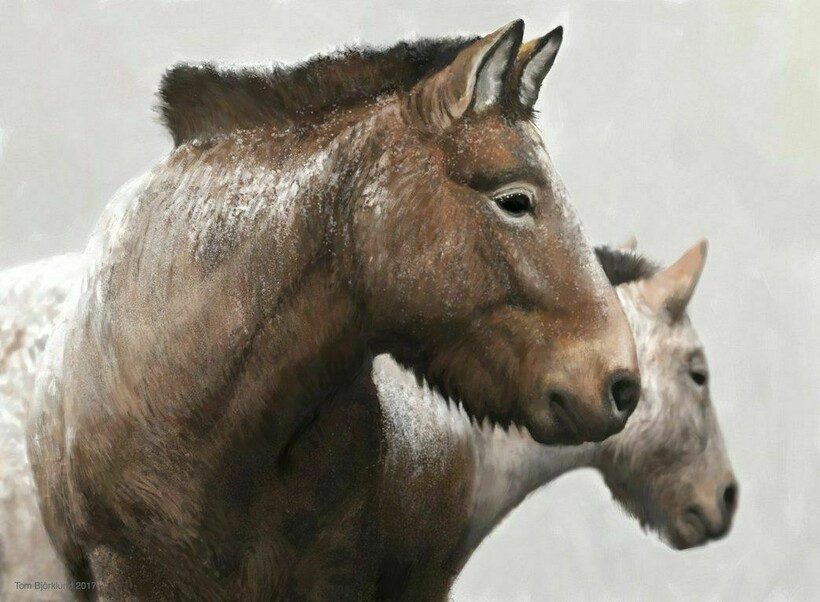
Lena horse / Illustration: travelask.ru
Among the genes important for selection were the GSDMC and ZFPM1 genes:
- GSDMC – a gene that in humans is associated with various diseases, but, in the case of animals, on the contrary, contribute to increased strength of the spine.
- ZFPM1 – plays an important role in the regulation of mood, as well as the aggressive behavior of the animal. In domestic horses, variants of this gene predominate, which means reduced aggression.
If we summarize the analysis of the genomes of ancient horses, it becomes clear that selection during domestication was based on two main features: strength of the back and complaisance of character.
And what about the tarpan, which was found in the European and Asian steppes in the XNUMXth century, including in the south of Russia? Unfortunately, the researchers found that the tarpan was not the ancestor of the modern domestic horse. Moreover, the tarpan was neither an ancestor of the feral domestic horse, nor a hybrid of the domestic horse with the Przewalski’s Horse.
Among all the horses whose genomes have been studied, the closest relatives of the tarpan were the extinct wild horses of Europe. So that, tarpan was a relative, but not the ancestor of modern horses.
Source




